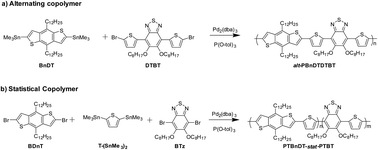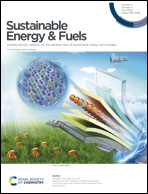Determining the sequence and backbone structure of “semi-statistical” copolymers as donor–acceptor polymers in organic solar cells†
Abstract
Organic photovoltaics (OPVs) are attracting significant attention due to the growing demand for economically viable and renewable energy sources. With efficiencies exceeding 16.5%, single junction bulk heterojunction (BHJ) devices are amongst the most promising and are nearing commercialisation. One recent avenue of research has focused on statistical conjugated copolymers. However, a detailed investigation as to why these materials can achieve higher power conversion efficiencies than their regular alternating counterparts is seldom reported. This work describes an investigation into donor–acceptor polymers demonstrating how differing monomer activities can lead to differing microstructures in a simple batch reaction, which in turn demonstrates promising optoelectronic and morphological properties required for organic photovoltaic devices. A one pot condensation polymerisation reaction with three monomers leads to an ABA triblock structure from differing monomer reactivities. This structure in turn leads to visualised phase separation which is possibly linked to an increase in performance. Further to this we report on the reliability of the Stille coupling for the synthesis of conjugated polymers.



 Please wait while we load your content...
Please wait while we load your content...